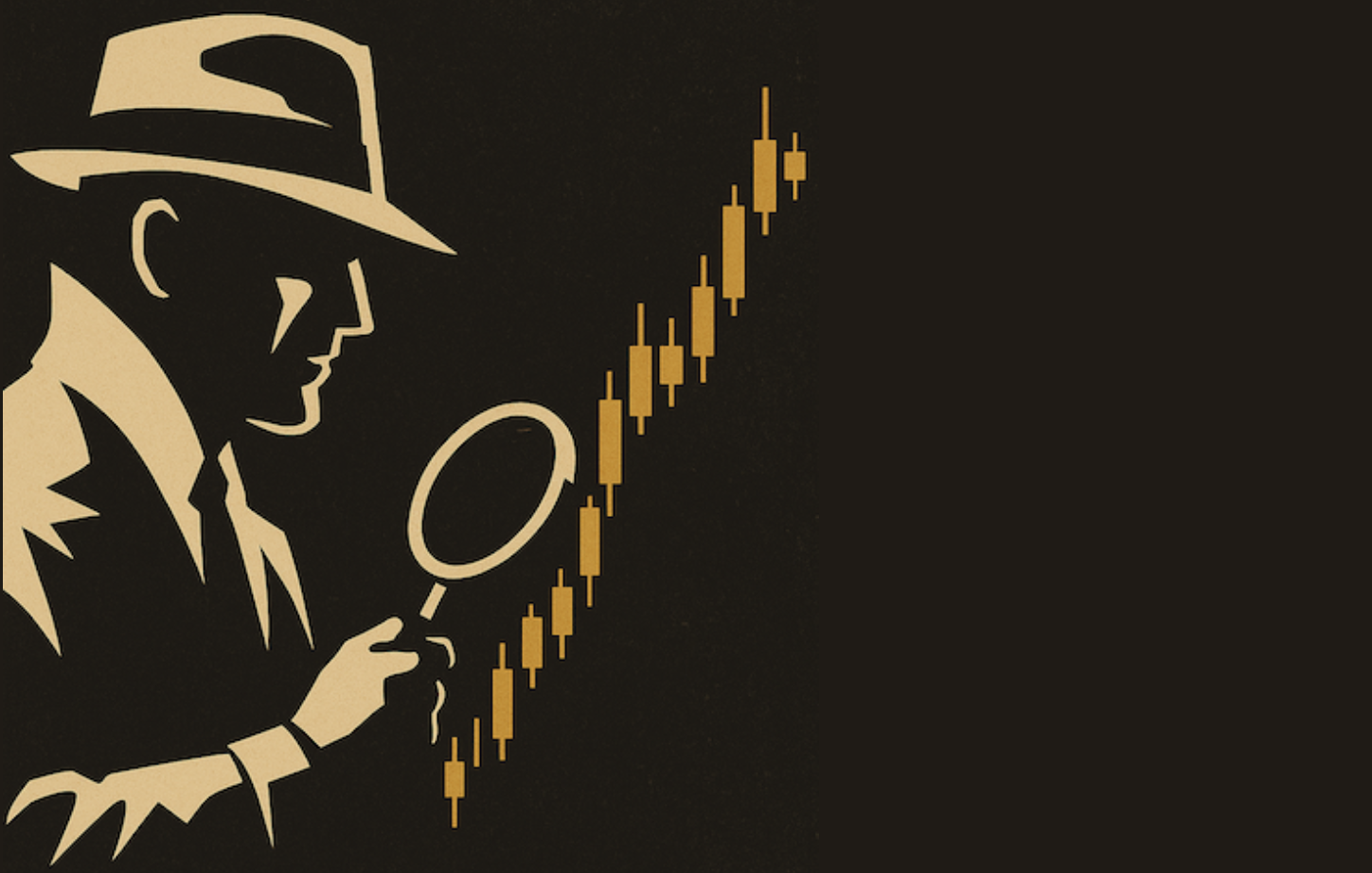RELATIVE WEAKNESS IN EMERGING MARKTS AND SMALL CAPS SHOWS MORE RISK AVERSION -- SO DOES THE BUYING OF BONDS AND DIVIDEND-PAYING STOCKS -- DOW'S LEADERSHIP COMING FROM DRUGS AND TELECOM
EMERGING MARKETS ARE UNDERPERFORMING ... Yesterday I wrote about how foreign markets had been underperforming the U.S. market since May. I also recently wrote that the peak in commodity markets could start to have a negative impact on countries tied to commodity markets like Canada as well as emerging markets. Emerging markets like Latin America are big exporters of commodities and have been especially weak of late as commodity prices have slid. Chart 1 compares the Emerging Market iShares (solid line) to the S&P 500 (daily bars) over the last year. Both peaked in May and bottomed in June. While the S&P has reached its May high, however, the EEM has regained barely half of its earlier losses. The relative strength ratio below Chart 1 shows the change in leadership more clearly. It's a ratio of the EEM divided by the S&P 500. The ratio, which had been rising for several years, peaked in May. After rebounding in July and August, the ratio appears to be rolling over again. That means that emerging markets are starting to lag behind the U.S. market. In fact, they're lagging behind the entire world. That's shown in Chart 2 which plots the EEM divided by the Dow Jones World Stock Index. The ratio has broken a two-year up trendline and shows the emerging markets going from global leaders to global laggards.

Chart 1

Chart 2
FALL IN BOND YIELDS AND COMMODITIES SUGGEST ECONOMIC WEAKNESS... I suspect part of the reason why riskier assets like emerging markets have done so poorly since May has to do with the two lines in Chart 3. The brown line is the CRB Index which peaked in May and has since fallen to the lowest level in more than a year. A peak in commodities is usually associated with economic weakness. That same message is gotten from the peak in the green line which is the yield on the 10-year T-Note yield. Since June, it has fallen to the lowest level in six months. Both falling lines are consistent with a weakening economy. If the U.S. economy is weakening, that's going to effect the entire world. No wonder investors have been abandoning risker emerging markets. That may also explain why small cap stocks have done worse than large caps since May as shown in Chart 4. Risk averse money has been moving into larger dividend-paying stocks.

Chart 3

Chart 4
DIVIDEND ETF TURNED UP IN MAY ... Chart 5 charts the Dow Jones Dividend Index (DVY) over the last year. This ETF specializes in large-cap dividend-paying stocks primarily in the financial, utility, and consumer staples area. It also has holdings in healthcare and telecommunications. All of those defensive groups have been market leaders since May. The chart itself shows the DVY consolidating from from last summer to this summer before breaking out to the upside in late July (green circle). The relative strength ratio, however, shows a more revealing story. After lagging behind the S&P 500 over the last year, the ratio line turned up in May and is still rising. That shows where a lot of the more risk-averse money has been going since then. In a weakening economy, large cap stocks usually hold up better than small caps. Large cap dividend-paying stocks offer even more of a cushion. The payment of stock dividends becomes even more attractive when bond yields are falling and bond prices are rising.

Chart 5
BOND PRICES HIT NEW 2006 HIGH ... Another place that nervous investors are putting their money is bonds. Last week I showed the 7-10 Year T-Bond ETF (IEF) moving up to challenge its January high. Chart 6 shows the bond fund breaking through that chart barrier in pretty decisive fashion. [Remember that bond prices rise when yields fall]. The relative strength line below Chart 6 is also revealing. It's a ratio of the IEF divided by the S&P 500. There again, the bond/stock ratio bottomed in May and is starting to rise again. That's because bond investors know that bond prices usually rise faster than stock prices in a slowing economy. And that appears to be where we're heading.

Chart 6
DOW'S BEST AND WORST PERFORMERS CARRY A MESSAGE ... Since the May peak, the Dow Industrials have been the best market performers. By contrast, small cap stocks have been the worst. There's a message there. The Dow Industrials aren't called blue chips for nothing. That's where investors go when they're nervous about the economic climate and the direction of the stock market. It's also instructive to see what investors have been buying within the Dow, and what they've been selling. There's a message there too. Over the last two months, the top percentage gainers in the Dow have been AT&T, Pfizer, Verizon, and Merck. Two telecoms and two pharmeuticals. That's pretty defensive buying. Meanwhile, the weakest have been Caterpillar, Alcoa, and Boeing. All are cyclical in nature and weaken with the business cycle. So not only are investors favoring the Dow Industrials; they're favoring defensive stocks within that index. Chart 7 also shows that the swing out of Caterpillar into AT&T started in May. This is the same defensive mindset that shows up in every other chart in this message, and is consistent with a slowing economy and a stock market advance that is getting more and more selective. Although the large cap indexes like the Dow and the S&P 500 are in the process of testing their May highs (Chart 8), there's nervous selling just about everywhere else. That usually happens in the latter stages of a bull market.

Chart 7

Chart 8










